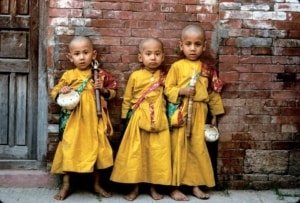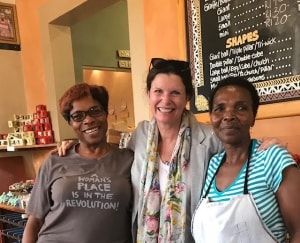On a warm day in a small agricultural commercial center in the arid Oriente of Guatemala I first noticed a particularly persistent beggar. I was in the Peace Corps at the time and was in a sandwich shop I had discovered in the bustling town square. I had just bought a sandwich, seated myself and was looking forward to enjoying my lunch when the beggar approached. She was a dark haired girl of twelve or so with an unruly lock of dark hair that hung over her left eye. Plainly dressed and barefooted, she thrust her open-palmed hand at me and said something in Spanish about money. I shook my head negatively. She persisted. I pretended she wasn’t there and nervously ate my sandwich. At last she left to solicit other customers. I had a very uneasy lunch.
After eating I stood up and headed for the exit. She was waiting for me at the door with her hand out. Her unruly lock of hair had not moved nor had the pleading expression on her face changed. I stared straight ahead, guiltily, and continued on my way. I didn’t look back but my thoughts did.
I continued to eat lunch at that particular restaurant. The little beggar was usually there and, when there, always begging. I began to wonder about her. Who was she? Why was a young girl like her begging? The more I watched her the more I began to admire her persistence. My curiosity led me to ask some of the locals about her. Their responses were derisive. Most dismissed her as an embarrassment. None had anything good to say about her. Some said she came from a bad family. I became even more curious.
I decided to try and strike up a conversation with the girl. She was like a feral cat which will let you feed it but which runs away if you approach it. Her initial response was to resort to her usual plea for money.
Gradually she began to talk to me. She told me that her name was Maria and that she lived with her grandmother. She said she went to school in the morning and was in the fifth grade Our short conversations continued each time we met at the sandwich shop. One day she surprised me and said she would like me to meet her grandmother. I told her I would enjoy that. We set a time and place her choice. She chose the local ice cream parlor. Maria and her grandmother met me at the parlor on the appointed time and day. It was located in a worn and dank adobe structure typical of the commercial buildings in the town. The interior was lighted by single light bulbs hanging from the ceiling. We sat down at a rough hewn wooden table and had ice cream sundaes. My little friend’s grandmother was a woman who had obviously lived a difficult life. Her face was lined and worn and her mouth toothless. She was probably no older than I, fifty-eight at the time, but the rigors of her life had obviously taken their toll. She was friendly and conversational nevertheless. Her granddaughter was obviously delighted to introduce her to her new friend. I did notice that she clung to her grandmother affectionately finding comfort in her closeness. I later learned that the women’s daughter, the mother of Maria, had led a dissolute life and had been murdered by one of her “boyfriends”.
Guatemalan Weaver
My friendship with the little girl grew. She started hailing me as “Gringo!” when she saw me on the street. One day I asked her why she never wore shoes. She told me she didn’t have any. The next day Maria, her grandmother and I visited a local shoe store to buy her a pair of shoes. She was excited. She eagerly looked through all of the styles on display and chose a pair she liked. She then asked her grandmother for her opinion. Her grandmother liked her choice and we bought the shoes. Maria was thrilled. She gaily walked down the street arm and arm with her grandmother and proudly carried the bag containing the shoes.
One day Maria asked me if I would visit her at her school. I was touched. I told her I would be honored to visit. In planning for the visit I was a bit apprehensive. In the States we have special times when we visit children’s teachers and classrooms and I wondered if it was okay to arrive at the school unannounced. On the day of the visit I found that my worries were futile. I was warmly welcomed. Maria was delighted. She proudly showed me her desk and introduced me to her teacher. She pointed to her feet to show me her new shoes. She was the center of her classmates” attention that day. During the rest of my stay in her town when I saw Maria she would often mention the day when the “Gringo” visited her at school.
Guatemalan Shopkeeper
It wasn’t many months after my visit to the school that I returned home to the States. I lost track of Maria.
Nine years after I left the busy town in Guatemala’s cattle country I returned for a visit. I stopped by a store run by a woman who remembered me and who remembered my concern for the beggar girl. I asked her about Maria. She told me she gone to Mexico – apparently following in her mother’s footsteps. “Nunca cambien,” said my friend. “They never change.”
I pray that is not true.




